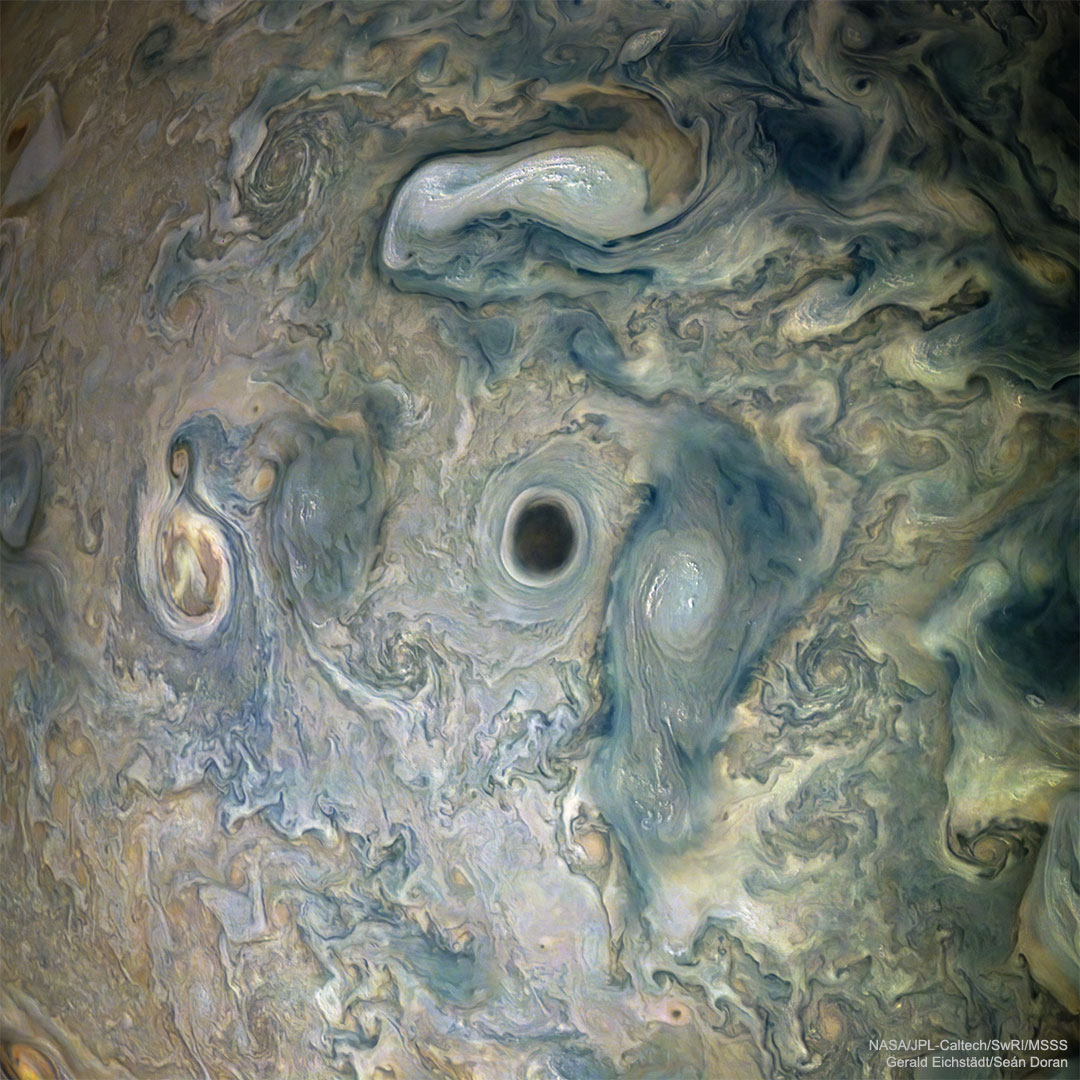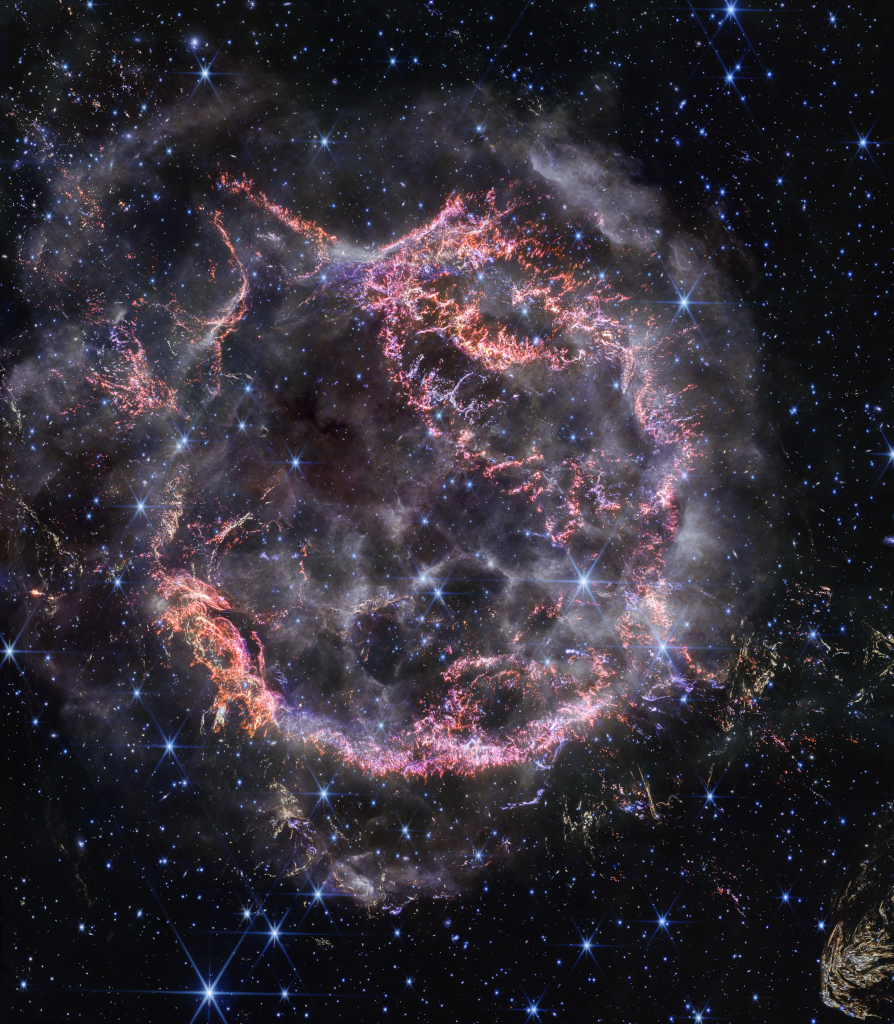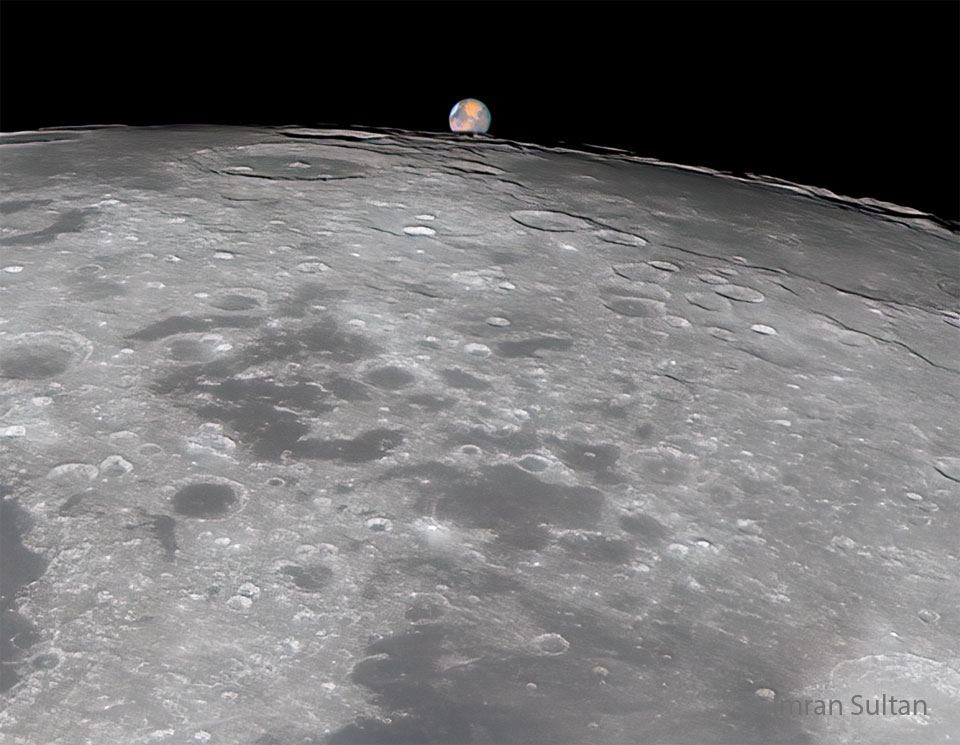Nombre total de pages vues
17/01/2025
SANTé/MEDECINE - Cancer du poumon : un signe précoce - 1/2 -
ASTRONOMY - Supernova Remnant Cassiopeia A
Image Credit: NASA, ESA, CSA, STScI; D. Milisavljevic (Purdue University), T. Temim (Princeton University), I. De Looze (University of Gent)
Explanation: Massive stars in our Milky Way Galaxy live spectacular lives. Collapsing from vast cosmic clouds, their nuclear furnaces ignite and create heavy elements in their cores. After only a few million years for the most massive stars, the enriched material is blasted back into interstellar space where star formation can begin anew. The expanding debris cloud known as Cassiopeia A is an example of this final phase of the stellar life cycle. Light from the supernova explosion that created this remnant would have been first seen in planet Earth's sky about 350 years ago, although it took that light 11,000 years to reach us. This sharp NIRCam image from the James Webb Space Telescope shows the still hot filaments and knots in the supernova remnant. The whitish, smoke-like outer shell of the expanding blast wave is about 20 light-years across. A series of light echoes from the massive star's cataclysmic explosion are also identified in Webb's detailed images of the surrounding interstellar medium.
16/01/2025
AERONAUTIQUE - La grande épopée des ballons dirigeables - 2010 : le ballon captif de surveillance 101230-N-0020T-144
NEWS EN IMAGES - Lancée
ASTRONOMY - M83: The Southern Pinwheel
2025 January 16
Image Credit: CTIO, NOIRLab, DOE, NSF, AURA;
Processing: T. A. Rector (U. Alaska Anchorage/NOIRLab), D. de Martin & M. Zamani (NOIRLab)
Explanation: Beautiful and bright spiral galaxy M83 lies a some twelve million light-years away, near the southeastern tip of the very long constellation Hydra. Prominent spiral arms traced by dark dust lanes and blue star clusters lend this galaxy its popular name, The Southern Pinwheel. Still, reddish star forming regions that dot this cosmic pinwheel's spiral arms have suggested another nickname, the Thousand-Ruby Galaxy. A mere 40,000 light-years across, smaller than the Milky Way, M83 is a member of a group of galaxies that includes active galaxy Centaurus A. In fact, the core of M83 itself is bright at x-ray energies, showing a high concentration of neutron stars and black holes left from an intense burst of star formation. This sharp color image also features spiky foreground Milky Way stars and distant background galaxies. The image data was captured with the Dark Energy Camera and Blanco 4-meter telescope at Cerro Tololo Inter-American Observatory.
15/01/2025
AERONAUTIQUE - La grande épopée des ballons dirigeables - 1944 - le ZNP-K-28 : pour la surveillance maritime
SANTé/MEDECINE - A la découverte de l'oreille - L'oreille moyenne
ASTRONOMY - Wolf Moon Engulfs Mars
2025 January 15
Image Credit & Copyright: Imran Sultan
Explanation: Does the Moon ever engulf Mars? Yes, but only in the sense that it moves in front, which happens on rare occasions. This happened just yesterday, though, as seen from some locations in North America and western Africa. This occultation was notable not only because the Moon was a fully lit Wolf Moon, but because Mars was near its largest and brightest, moving to opposition -- the closest to the Earth in its orbit -- only tomorrow. The engulfing, more formally called an occultation, typically lasting about an hour. The featured image was taken from near Chicago, Illinois, USA just as Earth's largest satellite was angularly moving away from the much more distant red planet. Our Moon occasionally moves in front of all of the Solar System's planets. Given the temporary alignment of orbital planes, the next time our Moon eclipses Mars will be a relatively soon February 9.
ASTRONOMY - Jupiter Abyss
2024 November 3 Jupiter Abyss Image Credit: NASA , Juno , SwRI , MSSS ; Processing & License : Gerald Eichstädt & Sean Dor...

-
2022 September 26 All the Water on Planet Earth Illustration Credit: Jack Cook, Adam Nieman, Woods Hole Oceanographic Institution ; Data ...
-
2025 May 11 The Surface of Venus from Venera 14 Image Credit: Soviet Planetary Exploration Program , Venera 14 ; Processing & Copyri...








